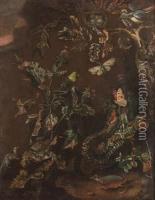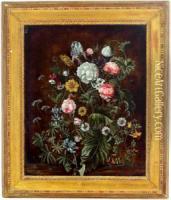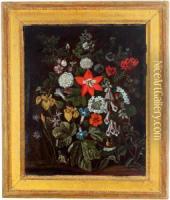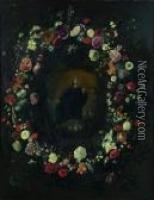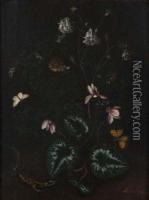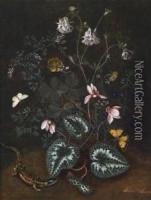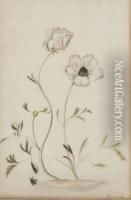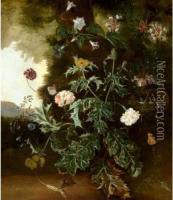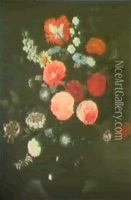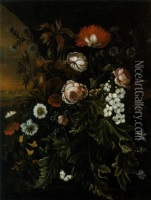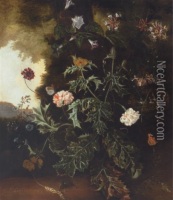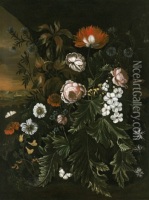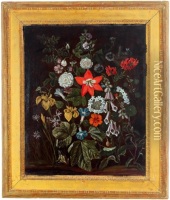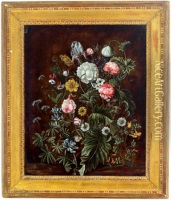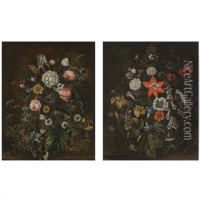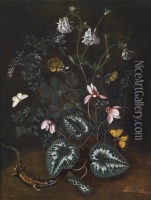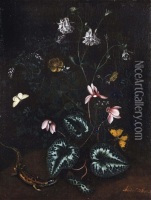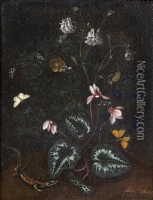Alida Withoos Paintings
Alida Withoos was a Dutch painter born in Amersfoort in 1661, during a period when the Dutch Golden Age was at its peak, showcasing tremendous advancements in art, science, and trade. She was one of the four children of the painter Matthias Withoos and Wendelina van Hoorn, who were instrumental in nurturing her artistic talents from a young age. Her father, a well-regarded painter of landscapes and still lifes, was her first and most influential teacher, instilling in Alida a profound understanding of botanical and naturalistic detail that would come to define her work.
Alida Withoos is best known for her detailed botanical illustrations and still-life paintings, which were highly esteemed for their precision and lifelike quality. She contributed significantly to the visual documentation of the plant collections in the Hortus Medicus of Amsterdam, a task that aligned her with other notable artists of the time who were also engaged in illustrating the burgeoning collections of exotic plants brought to the Netherlands from overseas territories. Her work not only served scientific purposes, helping botanists and horticulturists in their study of plant species, but also catered to the growing interest among the Dutch elite in botany and the natural world.
Her marriage to the painter Pieter van Schaeyenborgh, known for his fish still lifes, did not deter her from continuing her work; rather, it seems to have provided a complementary artistic alliance. The couple moved to Hoorn, where Alida continued to paint, and her works were sought after by collectors and botanists alike. Despite the challenges faced by women in the arts during the 17th century, Alida Withoos managed to carve out a space for herself and achieve recognition in her own right.
Alida Withoos' contributions to botanical art are part of a larger narrative of women's roles in the sciences and arts during the Dutch Golden Age. Her paintings are characterized by a meticulous attention to detail, vibrant colors, and a deep understanding of plant morphology, qualities that make her works a valuable asset for both art history and botanical studies. She passed away in 1730, leaving behind a legacy that not only highlights the contributions of women to art and science but also enriches our understanding of the natural world during a pivotal period in history.
